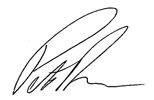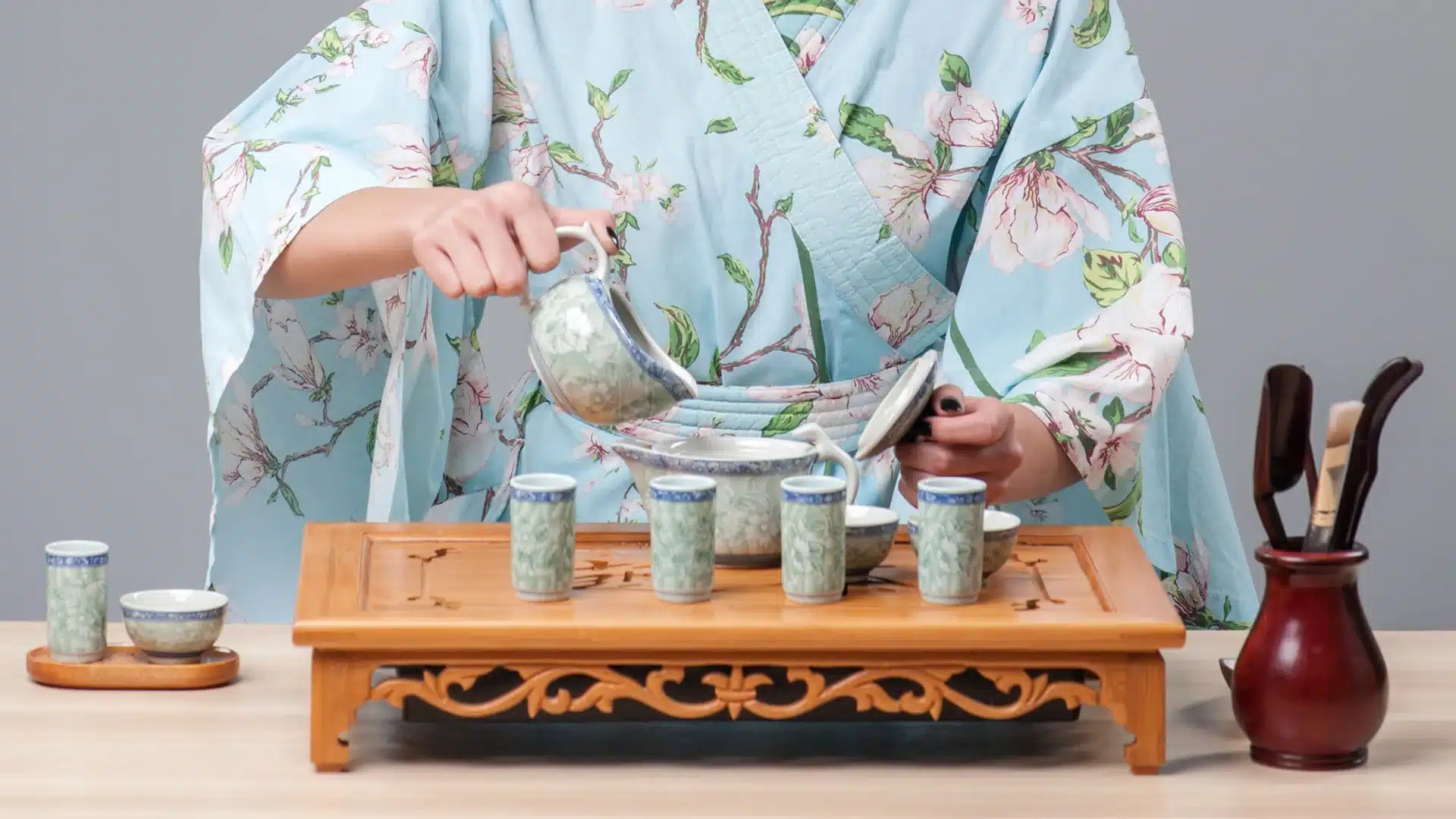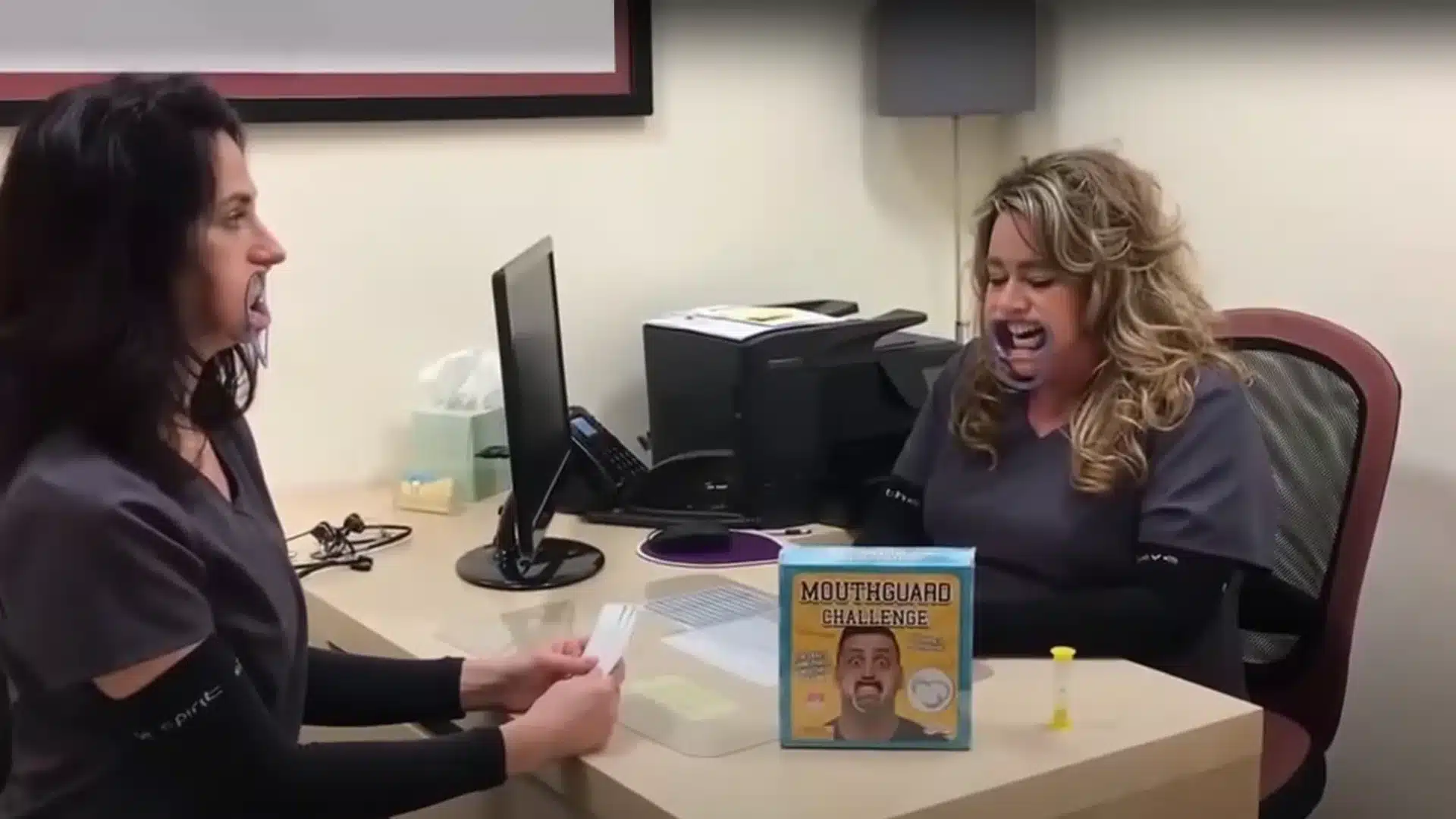Before I became a dentist, I was a mechanical engineer for Tenneco Automotive, which meant I got to travel to our location in Japan. While the highlight for me was definitely the Kobe steak I had for dinner with some clients, one of the more interesting things I observed was the ritual involved when it comes to something as ‘simple’ and routine as making tea. Let me add that my wife is English, and she insists that she knows the “proper” way to make a cuppa.
As a dentist, brushing your teeth is my version of these tea ceremonies. It’s something we all (should) do every day (twice a day, hopefully), but it’s evident (on a daily basis) how many people are rushing through it, or just not doing it correctly at all.
It’s brushing your teeth, it can’t be that complicated, right?
I recently had a conference call with the person who helps us manage our website, and after we talked about GA, GSC, SEO and a bunch of other things I don’t fully understand, she grilled me on the ‘proper order of things’ and about her new electric toothbrush . . .
Brush, then floss, then mouthwash, or floss, brush, then mouthwash? Should this new toothbrush feel so weird? How does anyone get used to using this thing?
When you think about it, perhaps tooth brushing can be complicated. But then she’s an over-thinking geek (her words).
A recent article entitled, “Things you’re doing that will ruin your smile,” by Amy Sciarretto, notes lots of little actions that can cause big problems. Over the last few years I have seen a HUGE increase in toothbrush abrasion, particularly with my patients who are esthetically driven and drawn to having the pearliest whites. And (shameless plug) both Dr. Lake and I were quoted in the article (thanks to our web publishing geek consultant for the heads up, and to the author for writing the article).
Ironically, vigorous brushing can actually wear down enamel on your teeth as well as damage and push back the gums (more about that here), which then exposes that sensitive root area. My struggle is to convince these patients that more is not always better.
While Dr. Lake noted patients using their teeth as tools, the issue I see causing patients to “ruin their smile” is the combination of whitening toothpaste and improper use of an electric toothbrush.
First, let me say I personally use a Sonicare toothbrush and I love it for getting rid of staining on my teeth. And, evidently, so does our web consultant. She was quick to let me know that “getting used to it” turned out to be quick and easy.
“Actually, I think it’s gentler – even in the clean mode. As you start out, it takes about 12 uses to progressively get ‘stronger’ as you go until you’re totally comfy with it. Now that I’m comfy with it, I love it.”
~ The over-thinking geek on using her new Sonicare toothbrush.
The problem is patients with severe toothbrush abrasion, who tend to apply heavy pressure versus a lighter touch, often fail to maximize an electric toothbrush’s effectiveness. In other words, they fail to let the toothbrush do the brushing. It is the equivalent of taking an electric sander and putting too much elbow grease into your work; it defeats the purpose of the upgrade.
The newer, whitening toothpastes remove stain by using abrasives, but when you add that with a very efficient toothbrush like a Sonicare, it really is like taking an electric sander to your teeth. Most patients do not realize how abrasive a lot of the whitening toothpastes really are. Each toothpaste’s abrasiveness is actually measured by its Relative Dentin Abrasivity – they are not all made the same.
Here are the RDA Values for the most popular OTC whitening toothpastes:
To help quantify the abrasivity of dentifrices, the ADA along with various academic, industry and government agencies established a standardized scale called Relative Dentin Abrasivity (RDA). When a toothpaste is marketed, it must get FDA approval before it can be sold to the public. One of the tests that is conducted before its approval is to determine its RDA (Radioactive Dentin Abrasion or Relative Dentin Abrasivity) value.
| RDA Value | Dentifrice brand and variety | Source |
|---|---|---|
| 7 | straight baking soda | Church & Dwight |
| 8 | Arm & Hammer Tooth Powder | Church & Dwight |
| 30 | Elmex Sensitive Plus | Elmex |
| 35 | Arm & Hammer Dental Care | Church & Dwight |
| 42 | Arm & Hammer Advance White Baking Soda Peroxide | Church & Dwight |
| 44 | Squigle Enamel Saver | Squigle |
| 48 | Arm & Hammer Dental Care Sensitive | Church & Dwight |
| 49 | Arm & Hammer Peroxicare Tartar Control | Church & Dwight |
| 49 | Tom’s of Maine Sensitive (given as 40’s) | Tom’s |
| 52 | Arm & Hammer Peroxicare Regular | Church & Dwight |
| 53 | Rembrandt Original (RDA) | Rembrandt |
| 54 | Arm & Hammer Dental Care PM Bold Mint | Church & Dwight |
| 57 | Tom’s of Maine Children’s, Wintermint (given as mid-50’s) | Tom’s |
| 62 | Supersmile | Supersmile |
| 63 | Rembrandt Mint (‘Heffernan RDA’) | Rembrandt |
| 68 | Colgate Regular | Colgate-Palmolive |
| 70 | Colgate Total | Colgate-Palmolive |
| 70 | Arm & Hammer Advance White Sensitive | Church & Dwight |
| 70 | Colgate 2-in-1 Fresh Mint (given as 50-70) | Colgate-Palmolive |
| 79 | Sensodyne | Colgate-Palmolive |
| 80 | AIM | Unilever |
| 80 | Close-Up | Unilever |
| 83 | Colgate Sensitive Maximum Strength | Colgate-Palmolive |
| 91 | Aquafresh Sensitive | Colgate-Palmolive |
| 93 | Tom’s of Maine Regular (given as high 80’s low 90’s) | Squigle (Tom’s) |
| 94 | Rembrandt Plus | Rembrandt |
| 94 | Plus White | Indiana study |
| 95 | Crest Regular (possibly 99) | P&G (P&G) |
| 101 | Natural White | Indiana study |
| 103 | Mentadent | Squigle |
| 103 | Arm & Hammer Sensation | Church & Dwight |
| 104 | Sensodyne Extra Whitening | Colgate-Palmolive |
| 106 | Colgate Platinum | Indiana study |
| 106 | Arm & Hammer Advance White Paste | Church & Dwight |
| 107 | Crest Sensitivity Protection | Colgate-Palmolive |
| 110 | Colgate Herbal | Colgate-Palmolive |
| 110 | Amway Glister (given as upper bound) | Patent US06174515 |
| 113 | Aquafresh Whitening | Indiana study |
| 117 | Arm & Hammer Advance White Gel | Church & Dwight |
| 117 | Arm & Hammer Sensation Tartar Control | Church & Dwight |
| 120 | Close-Up with Baking Soda (canadian) | Unilever |
| 124 | Colgate Whitening | Indiana study |
| 130 | Crest Extra Whitening | Indiana study |
| 133 | Ultra brite (or 120-140) | Indiana study (or Colgate-Palmolive) |
| 144 | Crest MultiCare Whitening | P&G |
| 145 | Ultra brite Advanced Whitening Formula | P&G |
| 145 | Colgate Baking Sode & Peroxide Whitening (given as 135-145) | Colgate-Palmolive |
| 150 | Pepsodent (given as upper bound) | Unilever |
| 165 | Colgate Tartar Control (given as 155-165) | Colgate-Palmolive |
| 168 | Arm & Hammer Dental Care PM Fresh Mint | Church & Dwight |
| 200 | Colgate 2-in-1 Tartar Control/Whitening or Icy Blast/Whitening (given as 190-200) | Colgate-Palmolive |
| 200 | recommended limit | FDA |
| 250 | recommended limit | ADA |
It is worth noting that many factors, including bruxism, diet (highly acidic drinks and foods), low pH levels, age, brushing and oral hygiene habits, can all contribute to tooth wear. Overly aggressive brushing using highly abrasive tooth-whitening pastes is just one of those factors, but I’ve seen such a huge increase in that particular issue.
Whiten Your Teeth At Home
Use a low RDA toothpaste for everyday cleaning whether you use an electric toothbrush or a ‘manual’ one. Then, occasionally, after a wine tasting party perhaps, try this:
- Mix several teaspoons of baking soda with enough water to make a paste.
- Wipe your teeth and any extra saliva off with a paper towel.
- Put a good amount of paste onto your toothbrush and apply.
- Leave the paste on for a minute, then rinse.
You can also use the natural acid in fresh lemon juice to make the paste (instead of water). Lemon juice will supercharge the baking soda, but you want to be sure you don’t leave this paste on for any longer than a minute and rinse well to avoid the acid affecting your tooth enamel!!
How Do You Take Yours?

So while my wife puts her teabag in first, lets it steep, then removes the teabag (she is horrified at how Americans leave the teabag sitting in the mug while they drink their tea) and then puts in her milk and sugar, there are some schools of thought that posit you should put the “Milk In First.”
There really is no secret to making the best cup of tea, and there is no science behind whether you should; floss, brush, rinse or brush, floss, rinse. When you come in for your hygiene recall, Karey, Mindy and Angie always finish your appointment with floss; however, at home I floss, brush and rinse. Honestly, as long as you are doing these things daily, I am not going to micromanage the order in which you do it!
Keep calm and brush (gently) on,





